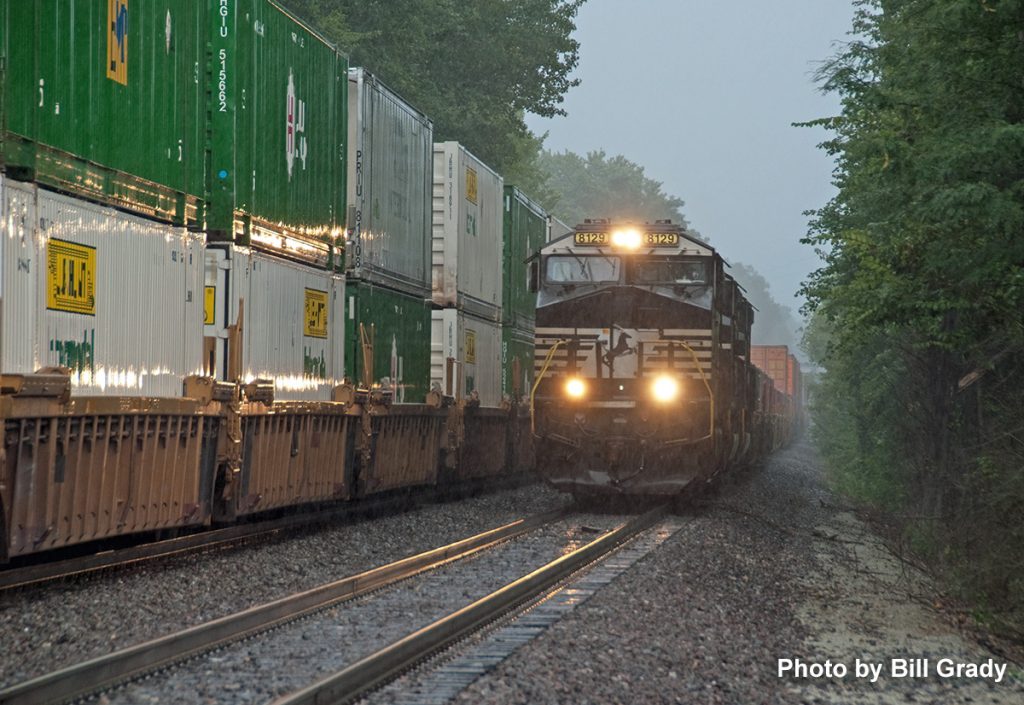


Click Images below to view a larger view of the other entries

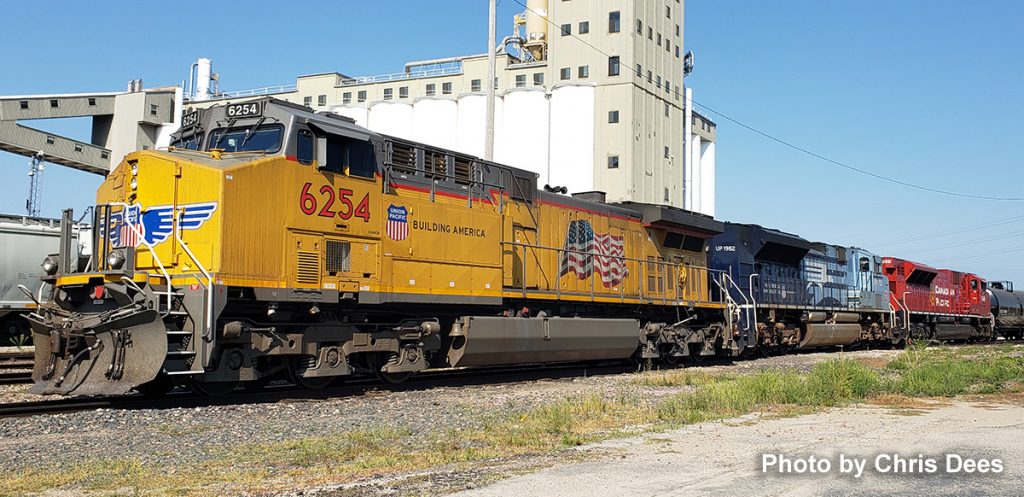


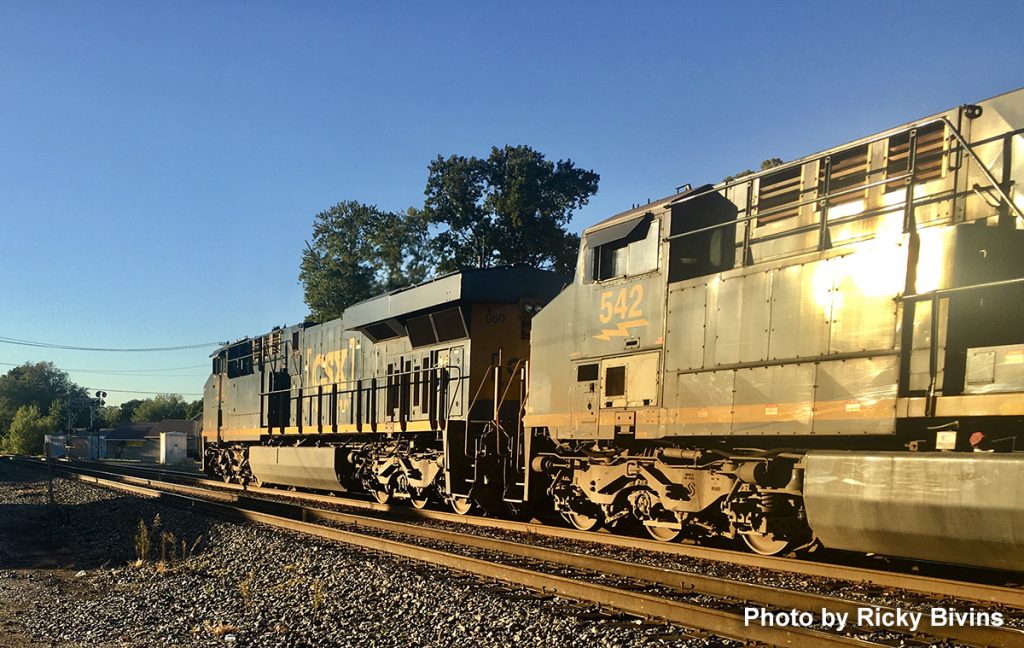

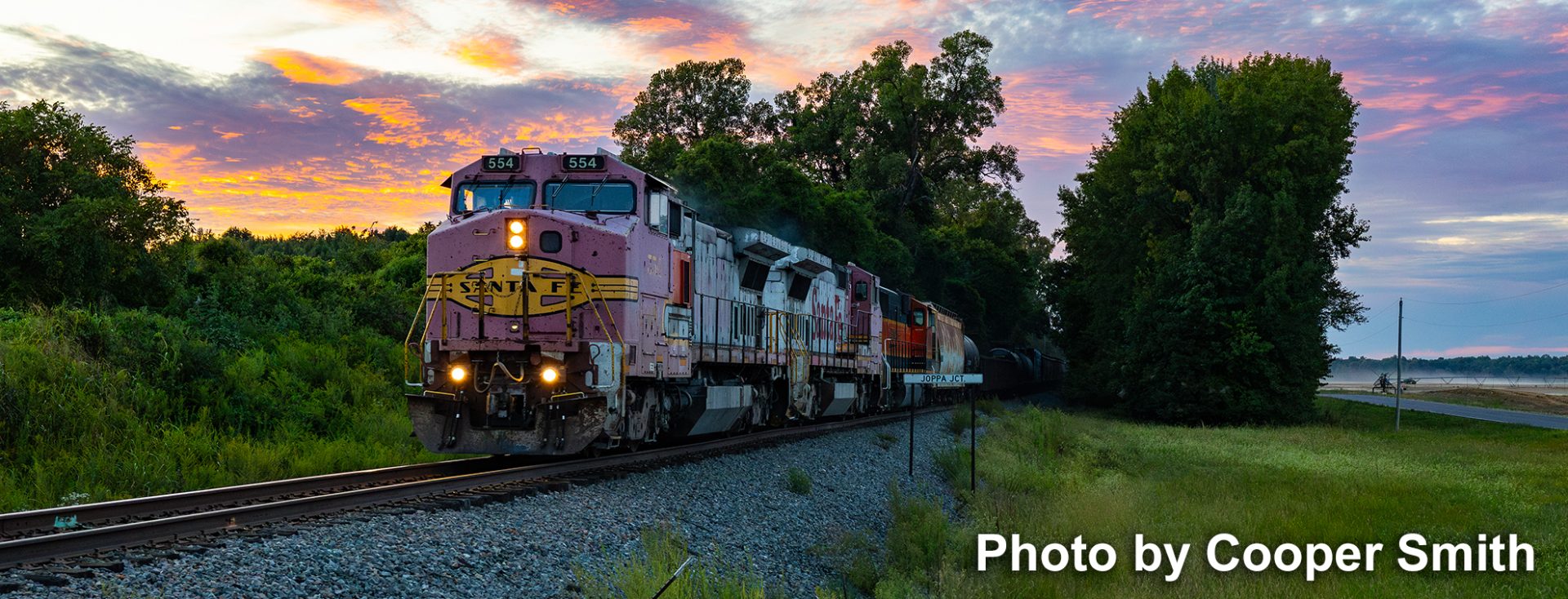



Click Images below to view a larger view of the other entries








Pix is from Kalmbach’s Classic Trains special “Trains go to War.” My guess is they used the shipping crate. Modifying it slightly to resemble a boxcar, and directed the exhaust downward to be disbursed among the desert sand. (Yankee Ingenuity at its best), Gary O. Ostlund


Rail safety has always been a high priority. Technology has provided the industry with a wide variety of devices to keep us safe, and the railroads from being sued. Even so, railroading is still a dangerous profession, and grade crossings still claim many victims.
Ditch lights, those twin headlights about five feet apart at eye level on the front of locomotives create a triangle of bright light on an approaching train. When the engineer blows the whistle, the ditch lights flash alternately as an added alert for the wary automobile or pedestrian.
It’s been widely reported that ditch lights were the creation of the Canadian railroads in their western mountains. These lights could peek around tight corners spotting fallen rock or other problems. Soon other railroads went along and by the mid-90s most railroad locomotives in the Americas had them. The Federal Railway Administration has since mandated them.
But, wait a second. Look at the second picture to the right. Seems the Russkies beat us to the punch just like Sputnik in 1957. The Russian steamer appeared in the August 1958 TRAINS Magazine. Photo Credits: B&LE 905 – Michael S. Murray, Russian Steamer #251 – J. N. Westwood

This multi-trip, three-day event will operate Friday, January 20th, Saturday the 21st, and Sunday the 22nd.
Trips will feature day-long train rides, multiple photo opportunities, and onboard appetizer and non-alcoholic drink service each day. One day will be behind steam locomotive Sugar Express No. 148 and the other two behind South Central Florida Express diesel locomotives. Three-day packages will be available for $400. Ticket sales begin October 5th.
For more information go to https://sugarexpress.com/rare-mileage-excursion/
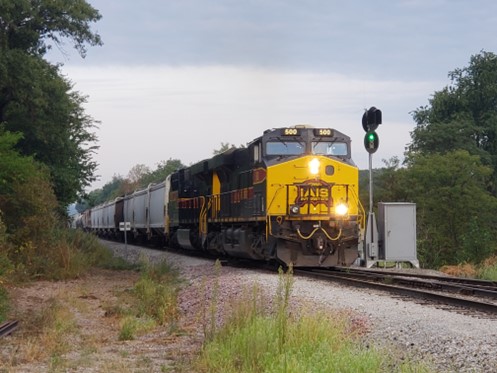

Click on images for full view.



A Moment in Time – It’s August 25, 1994, as Midwest Coal Handling prepares to depart P&L’s Central City, Kentucky yard back to TVA’s Paradise Steam Plant. The four locomotive consist included CF7 2508, GP7u 2005, CF7 2525, and another unidentified CF7. CF7 2525 was still wearing the paint of previous owner Nashville & Eastern. Today CF7 2508 survives in Enid, Oklahoma serving Consolidated Grain & Barge. Photo by Evan Werkema, Chris Dees collection.
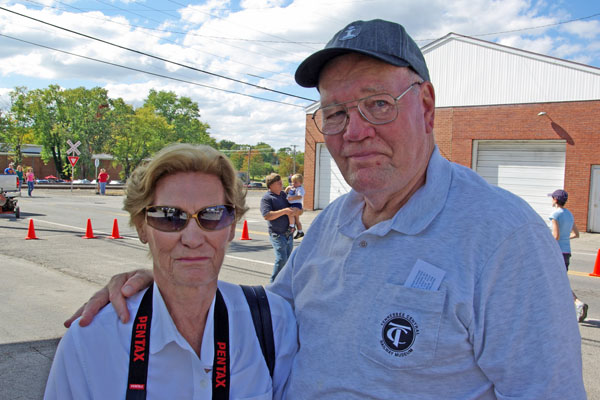
We want to remember the family of former chapter member Chuck Hinrichs who passed away August 1, 2022, at the age of 92. Graveside services were held at Kentucky Veteran’s Cemetery West Thursday, August 4, 2022 at 11:00a.m. Chuck served the West Kentucky Chapter of the National Railway Historical Society for several years as the newsletter editor and helped me get my start at it when he decided to give it up. I always appreciated his somewhat dry sense of humor and admired his railroad history knowledge, especially of the IC. – ed.
by Chris Dees
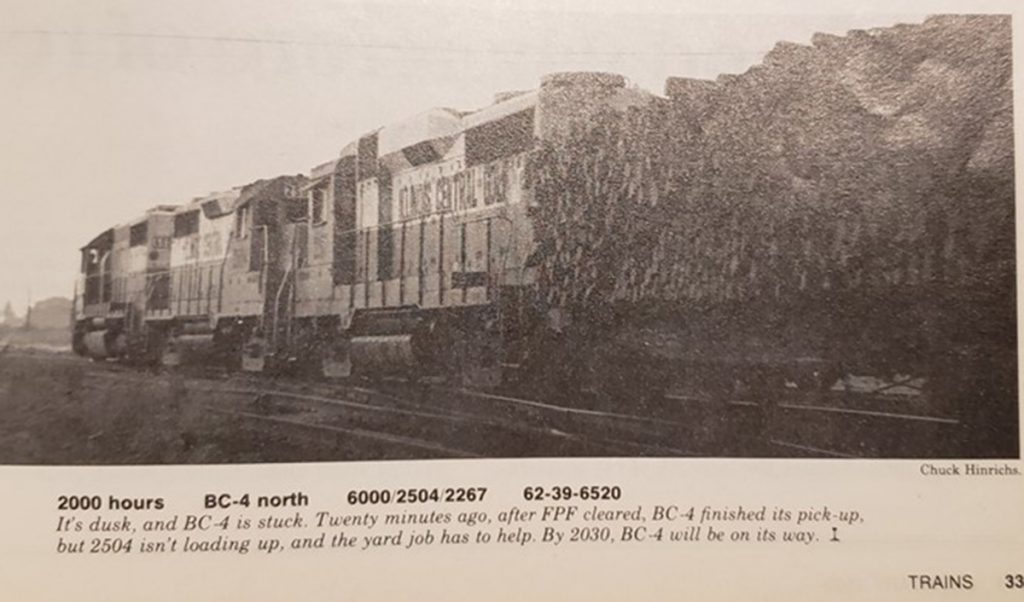
It’s August 1, 2022, and the email from Jim Pearson regarding the passing of long-time chapter member Chuck Hinrichs arrived in the early afternoon as I was returning from lunch. Today marked the start of another year with my current employer in the Milwaukee area, and Jim’s email brought back many comforting and happy memories of chapter meetings, train trips, and railfan adventures with Chuck that made me smile as the tears welled up inside. Bill Thomas has been requesting “how did you get into the hobby” stories for future newsletters, so I thought I would pass along a few remembrances of how Chuck got me interested in a wonderful aspect of the hobby – diesel locomotives.
My first introduction to Chuck occurred 10 years before I actually had a chance to meet him. Growing up in the far western part of Kentucky, Paducah was about the only true place I had ever “railfanned” by the time the February 1983 issue of Trains rolled onto the shelves of the local Readmore bookstore. Inside was the story of three Kentucky railfans – Jerry Mart, Timothy Baggett, and Chuck Hinrichs – detailing their July 29, 1982 visit to the Illinois Central Gulf in far southwest Kentucky during what was termed a “Slow Day in the Fulton Triangle”.
This article, documenting “when 27 trains ran and 22 didn’t”, was like opening pandora’s box for a then 12-year old railfan like myself. Fulton was only 52 miles away at the other end of the Jackson Purchase Parkway, and I begged Mom and Dad to drive down one Sunday after church to see the Illinois Central Gulf put on a show. It wouldn’t be the last time I went to Fulton, having spent many days just off Murray Street instead of studying at Murray State from 1989 to 1992. Chuck got the final frame of the 1983 article’s photo spread – a shot of northbound Birmingham-Chicago train BC-4 with ICG SD40 6000, GP35 2504, and GP30 2267 departing Fulton after making a set-out.
I discovered more of Chuck’s photography skills and his amazing knowledge of diesel locomotives through another magical place, The Hobby Shop in Hopkinsville. The Hobby Shop carried several railfan magazines that the local shop in Paducah did not: Pacific Rail News, CTC Board, and Extra 2200 South (aka “The Locomotive Newsmagazine”). Long before e-mail, Facebook and cell phone technology, Extra 2200 was THE magazine for learning about new locomotive orders, sales of locomotives to the plethora of new startup short line railroads, and just about anything diesel locomotive related (frame numbers, serial numbers, etc.). Chuck was a regular contributor to Extra 2200 South, and his knack for finding the rare, obscure, and one-of-a-kind locomotives was exceptionally detailed in several reports and photographs. A November 1989 photo at Princeton documented the brief time that former ICG GP38 9526 was patched up for up-and-coming locomotive rebuilder VMV Enterprises of Paducah.
In 1993, I finally met Chuck at the Thursday evening sessions at Don Clayton’s, and the monthly NRHS chapter meetings at the Madisonville depot. I remember Chuck being a very motivated and contributing member to the chapter, always ready to lend a hand, taking over editing of the monthly newsletter for a period of time, and representing the chapter during many director meetings on the national level. His knowledge of locomotives and the ongoing sales, swaps and new locomotive rebuilding was simply amazing in the pre-Internet era. Two railfan adventures with Chuck, one in the Centralia, Illinois area and one in the Lafayette, Indiana were epic adventures to say the least – a perusal of the chapter newsletter archives will forever be a testament to Chuck’s love of his fellow railfans and chapter members.
As I wrap up this tribute to Chuck, I have the chapter’s DVD “P&L – the first year” ready to go in the DVD for a walk down memory lane – it is narrated by Mr. Hinrichs himself, in that voice and demeanor only Chuck had. Even though it might have been a “Slow Day in the Fulton Triangle”, any time railfanning with friends sure makes for a great day of cherished memories. Rest in Peace.


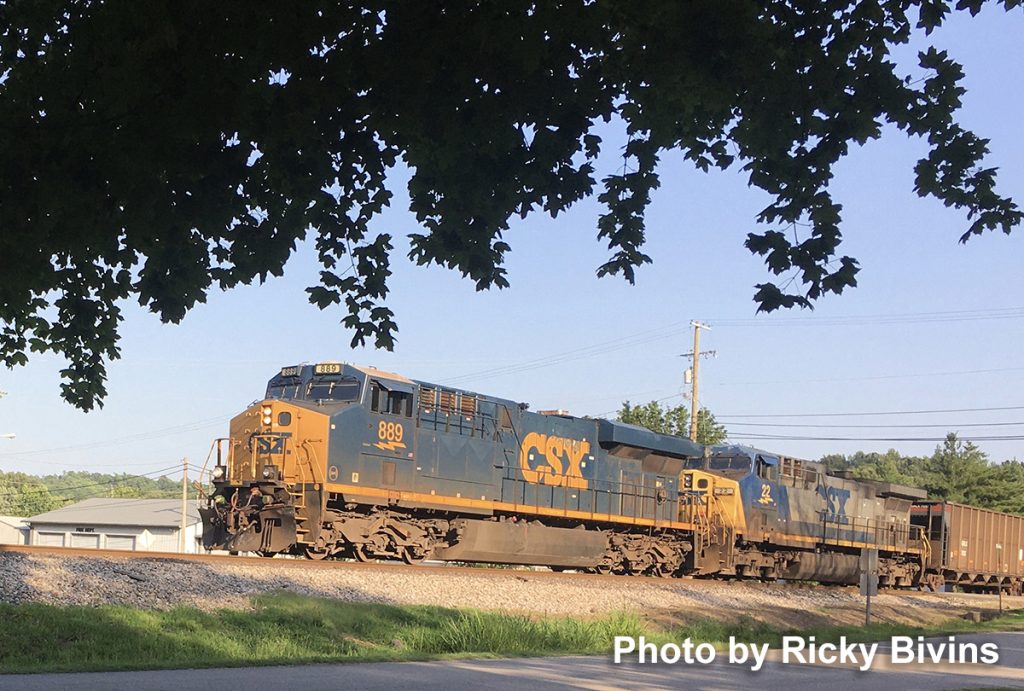
Click Images below to view a larger view of the other entries


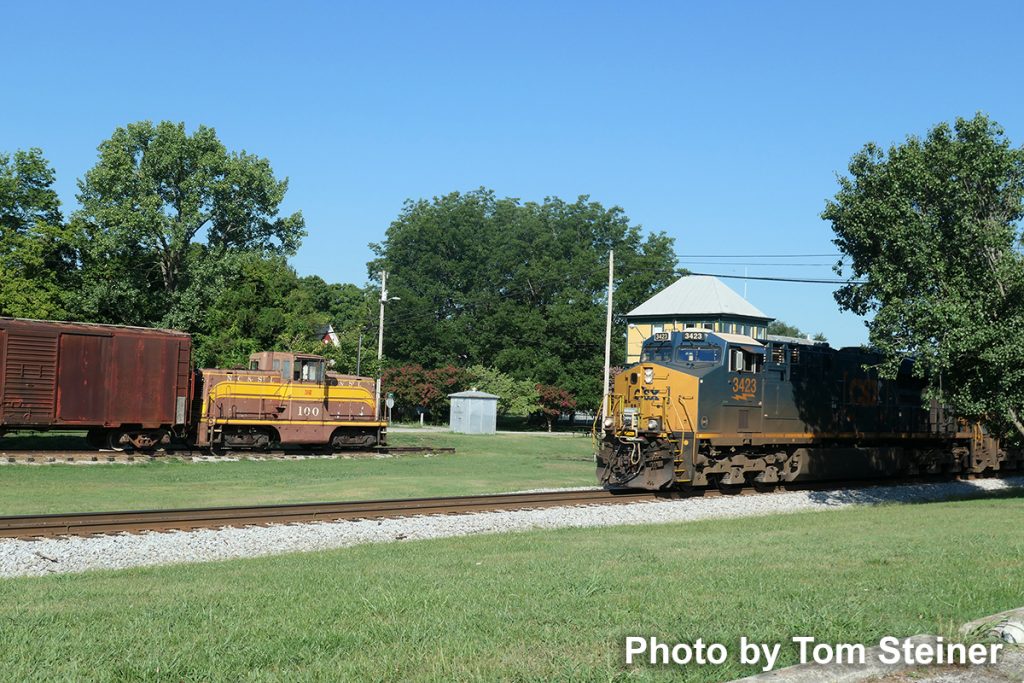


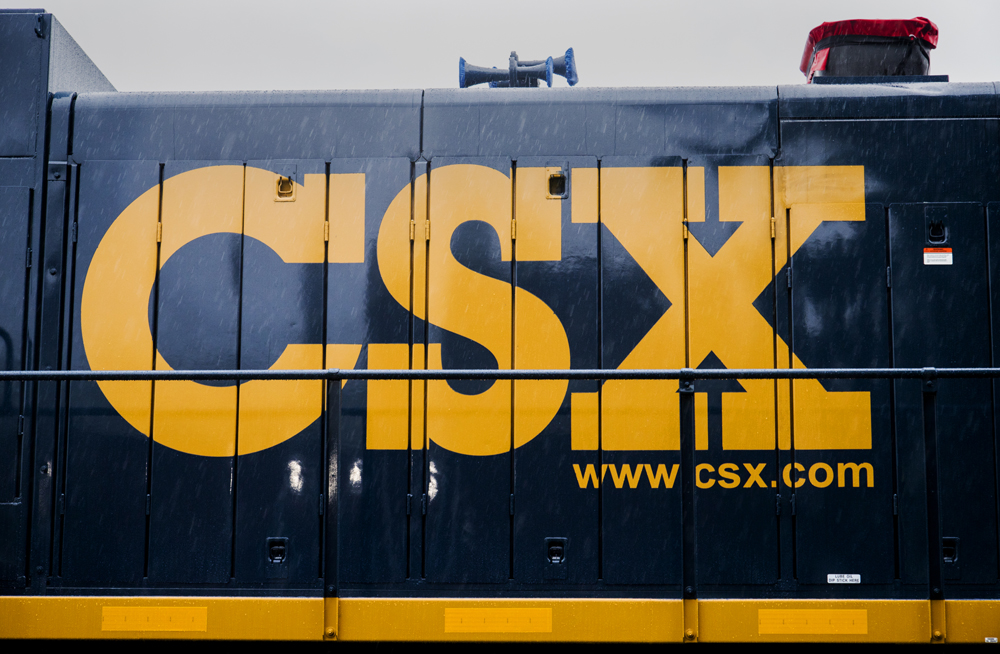
CSX has joined the relief effort in eastern Kentucky, where heavy rain on July 27 led to widespread flooding, forcing hundreds of people from their homes; at least 35 people died. The region is home to many CSX families, several of whom have been affected, according to the Class I railroad.
CSX reported on Aug. 10 that it has contributed $50,000 to the American Red Cross for disaster relief and $25,000 to the Team Eastern Kentucky Flood Relief Fund. It also provided $5,000 and transportation services to Kentucky Steam Heritage Corporation (KSHC). KSHC assembled former Ringling Bros. & Barnum and Bailey Circus housing cars into a nine-car train to provide 100 beds for relief workers in the region; CSX took on the job of moving the train into position as close as safely possible to the affected area.
CSX is now is matching employee donations—up to $1,000, dollar-for-dollar—to the CSX Employees Disaster Relief Fund (EDRF) or the Red Cross through its Matching Gifts program. The CSX Employees Disaster Relief Fund provides financial assistance to employees who have suffered severe damage to their homes and property, according to the railroad. It said that donations to the Red Cross will support the wide range of assistance under way, including working with community and government agencies to assess damage and support emergency needs. The Red Cross is providing shelter, food and health services to families who lost their homes and belongings; Team Eastern Kentucky, formed by Kentucky Gov. Andy Beshear, is also assisting.
“The flooding has disrupted the lives of many CSX employees and their families,” CSX Vice President of Corporate Communications Bryan Tucker said. “They’re experiencing significant financial hardship, and I encourage all CSX employees to consider helping your co-workers by providing a tax-deductible contribution to the CSX Employees Disaster Relief Fund.”
-Railway Age
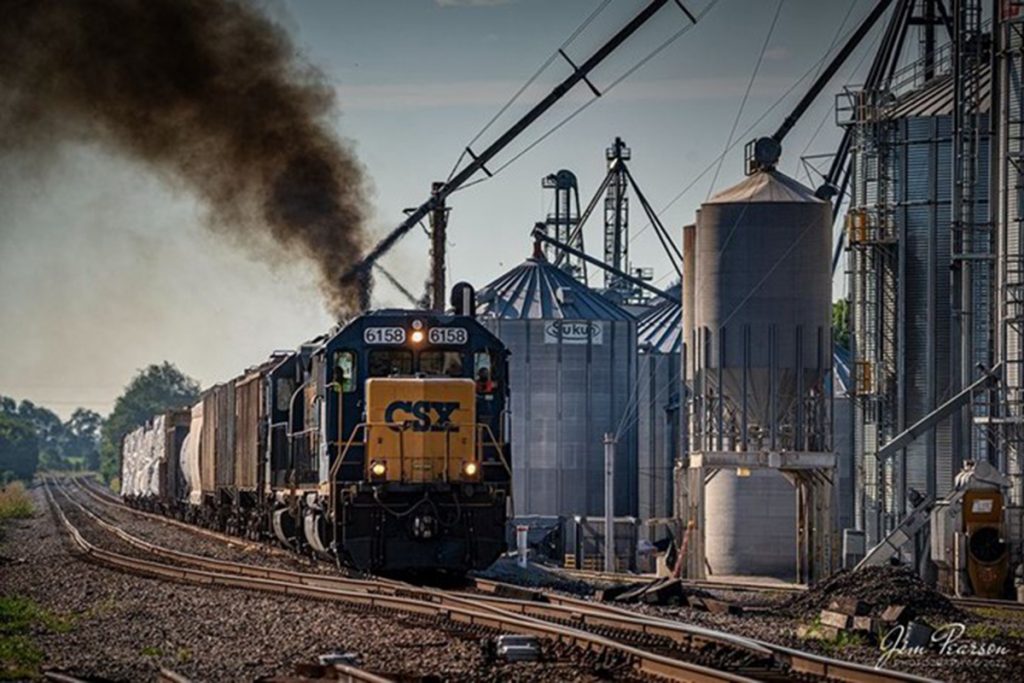
CSX L382 puts out a bit of smoke as it pulls away from WF Ware after picking up a cut of grain cars at Trenton, Kentucky on July 12th, 2022, on the Henderson Subdivision. L382 is the local that runs between Casky yard in Hopkinsville and Guthrie, Ky and here we catch it as it starts its run back to Casky. Photo and caption by Jim Pearson.

Our train is pulling into the siding at Osier (elevation 9,637). The downhill train has already arrived and we will pull just past it so we can access the Beanery. They don’t call it that, but that’s what the railroads had to feed passengers and crews.
We had been pampered all the way up the mountain, aboard the catered extra-fare lounge car, through tunnels, around Whiplash Curve and along the edge of the Toltec Gorge. The aspens were in their fall splendor, we had been consuming Rocky Mountain fresh air, “we were hungry.”
And the railroad knew it. The dining hall was specially built, hardly the original depot. It had the aura of a Swiss ski chalet with class and pizzazz. We had been asked whether we prefer turkey or barbecue for lunch. Mitch and I selected the turkey, expecting a sandwich and chips. Yikes, there was a buffet layout to rival Ryan’s or Furr’s.
Even at this altitude the temperature must have been in the high 70s. Ample time was given for wandering around the trains for pictures and friendship. Eventually we pulled out on our venture upward and the downhill train did likewise. Our train looped around the valley and our vista included the lodge, mountains, valleys and the downhill train disappearing around a bend. What a neat train ride.
Credits: Text and pix by me. This event was in September 2010, on the Cumbres & Toltec Scenic RR in SW Colorado.
Credits: East portal photo by Alex Mayes. Submitted by Gary Ostlund.

In 1956 when the fully dieselized Great Northern Railway turned off the juice on their electrified line over (actually under) the Cascade Mountains in Washington state, they thought their trouble with smoke and fumes was over. Wrong..! The 8-mile tunnel under Stevens Pass opened in 1929 had been utilized by electric powered trains from day-1.
With the introduction of diesel-power the tunnel had to be purged of diesel fumes after each eastbound train. The grade inside the tunnel eastbound is fairly steep, 1.57%. The long tunnels I know of are either ascending one direction or the other. Some ascend from both portals to a high point in the middle. All this is in the interest of drainage.
Fast-moving passenger trains can negotiate the tunnel successfully, but when slower freight locomotives tried it, operating problems became immediately apparent. Tremendous heat generated by the exhaust gases of slow moving east-bounds raises air temperatures dramatically. The trailing unit of a multiple-unit train soon overheats and shuts down. Increased burden on the remaining diesels soon shut down the remaining units, like dominoes. Another problem not anticipated, the train advancing through the long tunnel creates a “piston” effect, pushing most of the air in the tunnel in front of it. This left little fresh air to cool the radiators.
Soon a steel drop door was installed at the east portal, along with two 800 horsepower electric motors driving 6-foot fans. Now when a train enters the west entrance, the door automatically drops, and the fans engage creating a near hurricane blasting past the oncoming train. Problem solved…? Not quite
An interesting problem cropped up as a result of “supercharging” the bore with air. When the door opened to allow eastbound freights to move out of the tunnel a 100-mph gale dynamited out of the tunnel, and rocks and debris were thrown in all directions. To minimize this hazard the GN blacktopped the area around the tunnel entrance. Both portals are easily accessed for viewing from US 2, the Stevens Pass highway and Forest Service roads, without trespassing on railroad property.

A dozen years or so back, on the quiet deck out back enjoying our coffee, and perusing the morning mail, Justine read out loud Rick Bragg’s regular piece in Southern Living Magazine. Something clicked, it read as follows: “It was in the early 1960s, in a place called Spring Garden, Alabama, where I would lie in my bed in a big, ragged house and wonder if the whole world had stopped spinning outside my window. I would have asked my big brother, Sam, about it, but he would have just told me I was a chucklehead, and gone back to sleep. I have never slept much, I think I was afraid I would miss something passing in all that quite dark. Then, sometime around midnight, I would hear it. The whistle came first, a warning, followed by a distant roar, and then a bump, bump, bumping, as a hundred boxcars lurched across some distant crossing. They were probably just hauling pig iron, but in my mind they were taking people to places I wanted to be. A braver boy would have run it down and flung himself aboard.
And then it was gone, without warning, and I would go to sleep, grudging, and dream about oceans, and elephants and trains.”
That could have been me back in the Summers of mid to late 40s, way across the country out there in Tacoma. From my large upstairs open window, or sleeping on the ground in the back yard with friends, you could hear the trains switching. The clear air resonating the sound from over 4 miles away. Sometimes it sounded like the next block over. Or maybe it was a logging train hauling empties back to the woods near Mt Rainier, with that “malley” huffing and chuffing up that 3.5 percent grade. Oh those good ole days.
Did you know the NRHS Alco Historic Photos is the custodian of a collection of almost 300,000 photographic negatives and about 10,000 drawings and documents relating to the ACO and its successor ALCO Products? Take a few moments to browse around the NRHS website and you’ll find some interesting things like this Amtrak RS3.


Evansville Western Railway, Inc. (“EVWR”), seeks temporary overhead trackage rights over an approximately 11.7-mile line of railroad of Illinois Central Railroad Company (“CN”) between Sugar Camp, Illinois (Milepost 61.9), and Dial, Illinois (Milepost 73.6).
These temporary overhead trackage rights are necessary to permit EVWR to load Unit Coal Trains at Pond Creek Mine near Dial until the Sugar Camp Mine reopens following its closure due to a mine fire and the unrelated, but necessary relocation of long wall mining equipment.
The closure has removed millions of tons from the market, and these temporary trackage rights will permit EVWR to load Unit Coal Trains at Pond Creek Mine near Dial until the Sugar Camp Mine reopens. The temporary trackage rights will expire no later than July 15, 2022.
Get your pictures soon!
Submitted by Chris Dees
On Saturday, June 11, the Madisonville community and some of our chapter members enjoyed the Life Steam-Up at the home of Kathy and Ed Saley, who recently purchased the old Metcalfe home on Princeton Road. Ed has constructed an elevated G gauge track system for running his and his father’s live steamers. Ed also has live steam ships and stationary steam engines on display. He can be found tinkering with the equipment most afternoons after sundown during the summer. Click images for full view!


